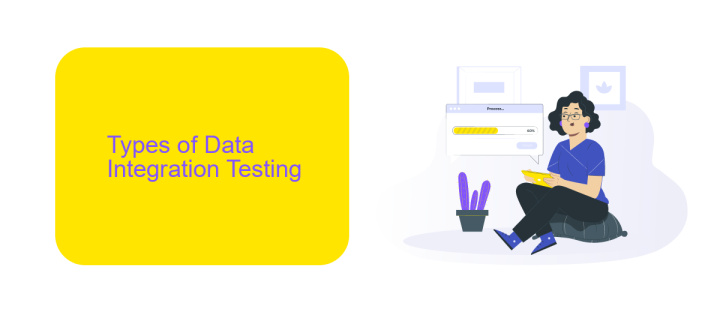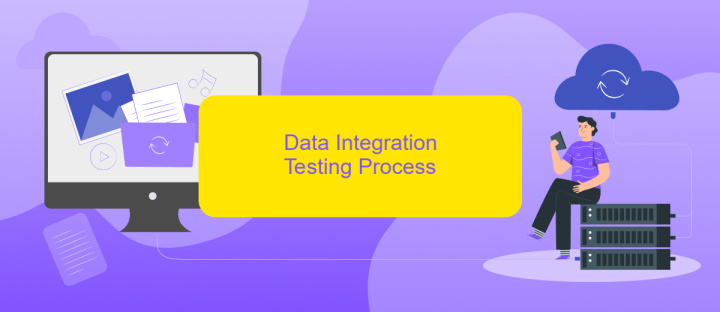Data Integration Testing
Data Integration Testing is a critical process in ensuring seamless data flow across various systems and applications within an organization. By validating the accuracy, consistency, and reliability of integrated data, this testing helps mitigate risks and enhances decision-making capabilities. This article delves into the methodologies, tools, and best practices essential for effective data integration testing, providing insights to optimize your data management strategy.
Introduction
Data integration testing is a critical aspect of ensuring that different systems and databases communicate effectively and share accurate information. This process involves validating the data flow, transformation, and storage across various platforms to ensure consistency and reliability. Proper data integration testing helps organizations avoid data discrepancies, which can lead to erroneous business decisions and operational inefficiencies.
- Verify data accuracy and consistency across systems
- Ensure seamless data flow between integrated applications
- Identify and resolve data transformation issues
- Validate data storage and retrieval processes
Effective data integration testing often requires robust tools and services to manage the complexities involved. ApiX-Drive is one such service that facilitates seamless integration between various applications, automating data flow and reducing the likelihood of errors. By leveraging tools like ApiX-Drive, organizations can streamline their data integration processes, ensuring high data quality and operational efficiency.
Types of Data Integration Testing

Data integration testing involves verifying the combination of data from different sources to ensure consistency, accuracy, and completeness. One type is schema integration testing, which checks the compatibility and correctness of data schemas across various systems. This ensures that data fields and structures align properly, preventing issues during data merging. Another type is data transformation testing, which validates the processes that convert data from one format to another. This is crucial for maintaining data integrity during transformations, such as ETL (Extract, Transform, Load) processes.
Additionally, data migration testing focuses on the accurate transfer of data from old systems to new ones, ensuring no data is lost or corrupted in the process. End-to-end testing evaluates the entire data integration workflow, from data extraction to final reporting, ensuring all components work seamlessly together. Tools like ApiX-Drive can facilitate these tests by automating data synchronization between various platforms, reducing manual errors, and enhancing the reliability of data integration processes.
Data Integration Testing Process

Data integration testing is a critical step to ensure that data from different sources is accurately combined and functioning as intended. This process helps identify inconsistencies, data loss, and other issues that could impact the overall system's performance and reliability.
- Identify Data Sources: Determine all the data sources that need to be integrated. This includes databases, APIs, and other data repositories.
- Define Data Mapping: Establish how data from different sources will be mapped to a unified structure. This involves setting up data transformation rules.
- Data Extraction: Use tools like ApiX-Drive to extract data from various sources. ApiX-Drive simplifies the process of connecting and pulling data from multiple APIs.
- Data Transformation: Transform the extracted data according to the defined mapping rules. This step ensures consistency and accuracy.
- Data Loading: Load the transformed data into the target system. Verify that the data is correctly inserted without any loss or corruption.
- Testing and Validation: Conduct thorough testing to validate the integrity and consistency of the integrated data. Use automated testing tools to streamline this process.
Effective data integration testing not only ensures data accuracy but also enhances the reliability of the integrated system. By following these steps and utilizing tools like ApiX-Drive, organizations can achieve seamless and efficient data integration.
Tools and Best Practices

Data integration testing is crucial for ensuring that disparate systems can communicate and share information seamlessly. Effective tools and best practices can significantly streamline this process, ensuring data accuracy and consistency across platforms. Choosing the right tools and following industry best practices can mitigate risks and improve the reliability of your data integration efforts.
One such tool is ApiX-Drive, which facilitates the setup of data integrations between various services without requiring advanced technical skills. This platform supports numerous applications and can automate data transfer, making it an excellent choice for simplifying integration testing processes.
- Use automated tools like ApiX-Drive to reduce manual errors and save time.
- Regularly validate data to ensure accuracy and consistency across integrated systems.
- Implement comprehensive logging and monitoring to quickly identify and resolve issues.
- Conduct thorough end-to-end testing to verify the entire data flow.
Adopting these tools and best practices can significantly enhance the efficiency and effectiveness of your data integration testing. By leveraging platforms like ApiX-Drive, you can ensure smooth data exchanges and maintain high data quality standards across all integrated systems.
- Automate the work of an online store or landing
- Empower through integration
- Don't spend money on programmers and integrators
- Save time by automating routine tasks
Challenges and Mitigation Strategies
Data integration testing presents several challenges, including data inconsistency, schema mismatches, and performance bottlenecks. Data inconsistency arises when data from different sources do not align correctly, leading to inaccurate results. Schema mismatches occur when the structure of data varies across systems, making it difficult to integrate seamlessly. Performance bottlenecks can happen when large volumes of data are processed, slowing down the integration process and affecting overall system performance.
To mitigate these challenges, it is essential to implement robust data validation and transformation processes. Tools like ApiX-Drive can automate data integration, ensuring consistency and reducing manual errors. ApiX-Drive offers pre-built connectors and customizable workflows that streamline the integration process, making it easier to handle schema mismatches. Additionally, optimizing data pipelines and using efficient algorithms can help manage performance bottlenecks. Regular monitoring and testing are crucial to identify and resolve issues promptly, ensuring a smooth and reliable data integration process.
FAQ
What is Data Integration Testing?
Why is Data Integration Testing important?
What are the key steps involved in Data Integration Testing?
How can automation be implemented in Data Integration Testing?
What are common challenges in Data Integration Testing?
Do you want to achieve your goals in business, career and life faster and better? Do it with ApiX-Drive – a tool that will remove a significant part of the routine from workflows and free up additional time to achieve your goals. Test the capabilities of Apix-Drive for free – see for yourself the effectiveness of the tool.


